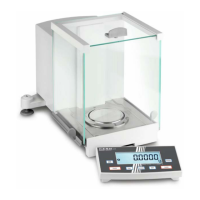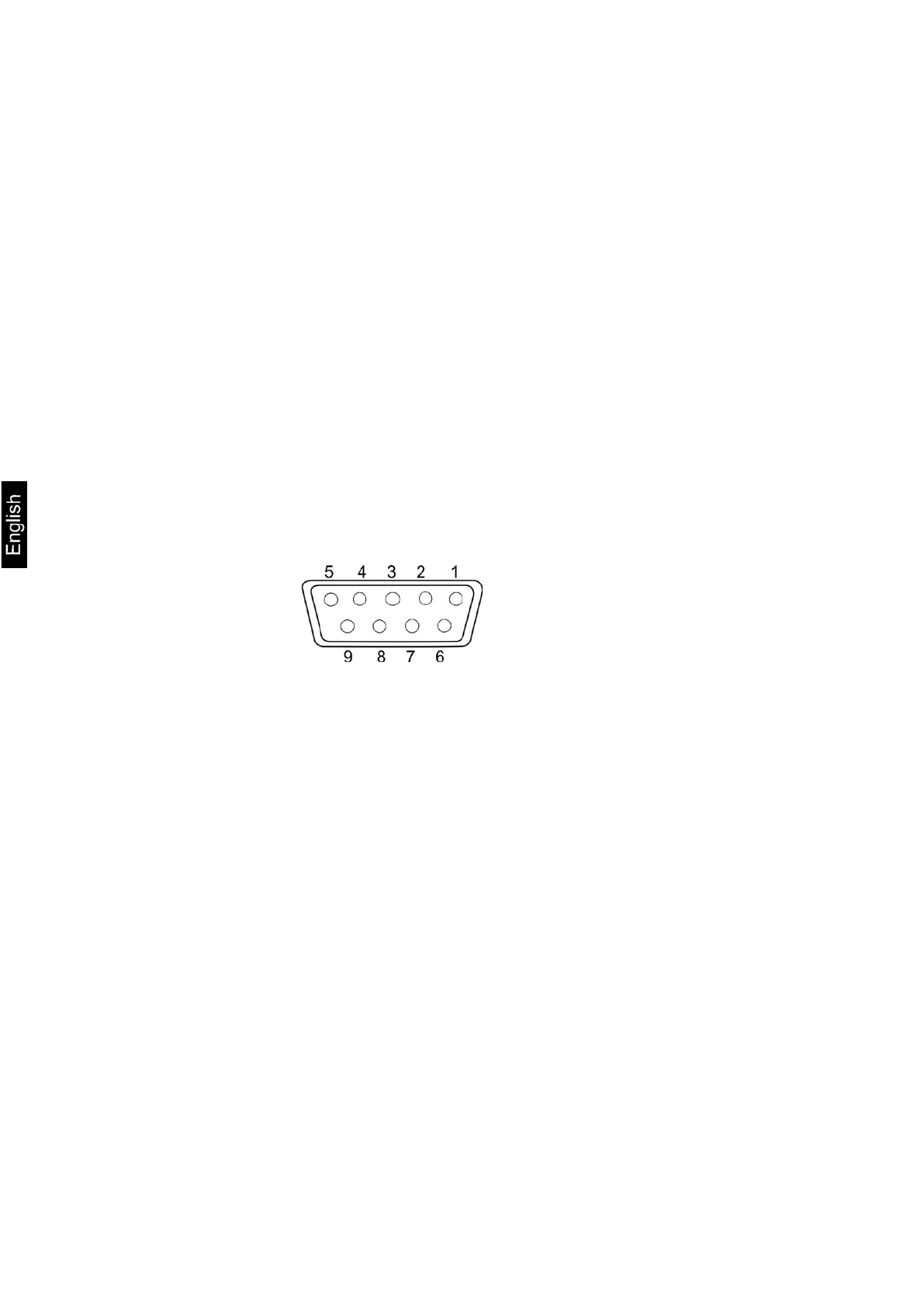28 ADB-BA-e-1510
11 RS232C-interface
For the connection of a peripheral device (printer, computer) the balance is as per
series equipped with a RS232C-interface.
The following conditions must be met to provide successful communication between
the weighing balance and the peripheral devices.
• Connect balance using a suitable cable with the interface of the peripheral
device. Faultless operation requires an adequate KERN interface cable.
• Communication parameters (baud rate, bits and parity) of balance and
peripheral device must match.
This data exchange is asynchronous using ASCII - Code.
11.1 Technical data
Connection 9 pin d-subminiature bushing
Pin 2: Receive data
Pin 3: Transmit data
Pin 5: Signal ground
Baud rate 1200 / 2400 / 4800 / 9600 optional
Parity 8 bits, no parity / 1 stop bit / 1 start bit

